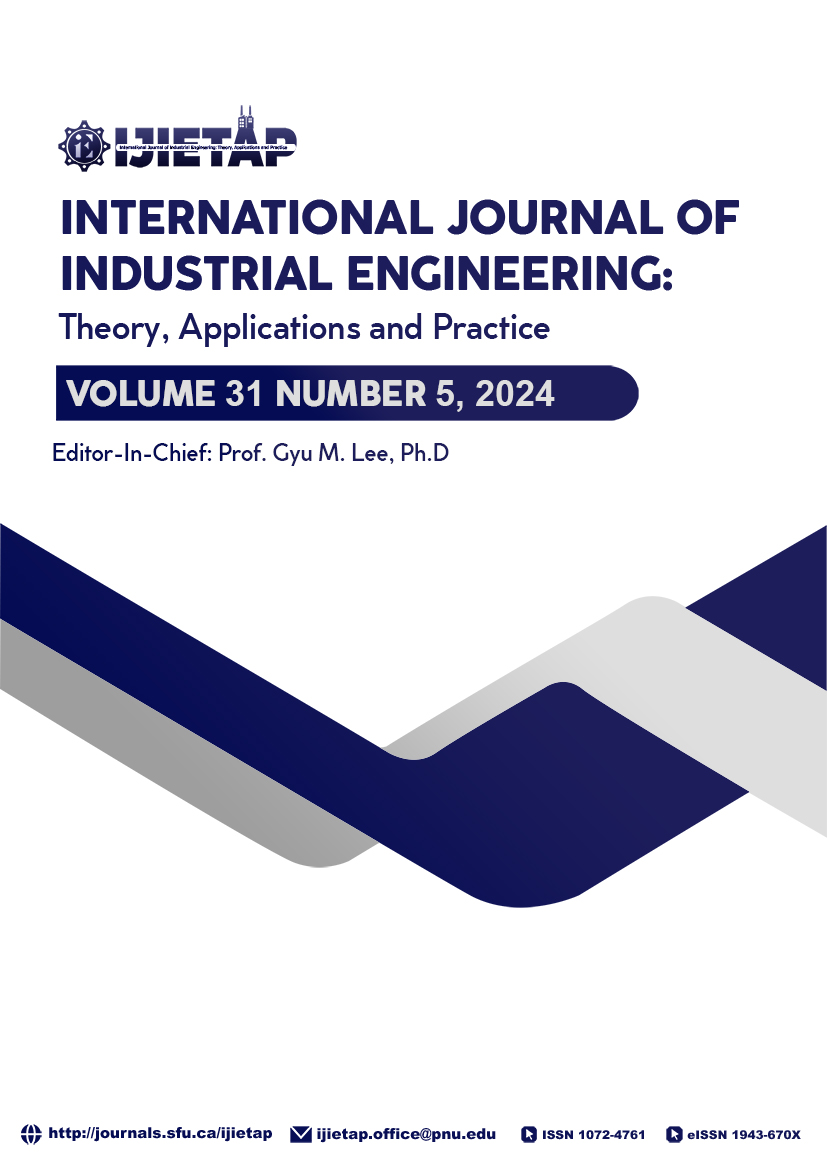Interval Robust Design on Quality Improvement for Non-Normal and Contaminated Responses
DOI:
https://doi.org/10.23055/ijietap.2024.31.5.10045Keywords:
Robust estimator, Response, MAD, Response surface, Robust confidence intervalAbstract
The basis of robust parameter design is the creation of a design that can resist the negative effects caused by uncontrollable or difficult-to-control external and environmental factors, which affect the product parameters in achieving product design during product realization activities. Robustness is the ability of a product or process to be least affected by variabilities caused by external factors. The success of the response surface methodology generally depends on a model chosen to fit the data distribution. Making incorrect assumptions regarding data distribution when creating response surface models can affect the effectiveness of the quality improvement strategy used. Non-normal or contaminated data is a common phenomenon in quality improvement applications. Although non-normal data is common in robust parameter applications, it is often the case that users ignore the underlying distribution shape of the data at the modeling stage and use normal theory techniques naively. This study proposes a dual response surface approach based on robust confidence intervals for cases where the experimental data do not meet normality assumptions or have contaminated data distribution. A new dual response surface methodology is proposed based on modeling the confidence interval, confidence interval, and confidence interval formulations with the response surface methodology. All the proposed methods make the process median unbiased for the mean using the skewness of the experimental data. Two well-known experimental design studies are used to demonstrate the procedure and its advantages.
Published
How to Cite
Issue
Section
License
The Author(s) must formally transfer each article's copyright before publication in the INTERNATIONAL JOURNAL OF INDUSTRIAL ENGINEERING. Such transfer enables the Journal to defend itself against plagiarism and other forms of copyright infringement. Your cooperation is appreciated.
You agree that the copyright of your article to be published in the INTERNATIONAL JOURNAL OF INDUSTRIAL ENGINEERING - THEORY, APPLICATIONS, AND PRACTICE is hereby transferred, throughout the World and for the full term and all extensions and renewals thereof, to INTERNATIONAL JOURNAL OF INDUSTRIAL ENGINEERING - THEORY, APPLICATIONS, AND PRACTICE.
The Author(s) reserve(s): (a) the trademark rights and patent rights, if any, and (b) the right to use all or part of the information contained in this article in future, non-commercial works of the Author's own, or, if the article is a "work-for-hire" and made within the scope of the Author's employment, the employer may use all or part of the information contained in this article for intra-company use, provided the usual acknowledgments are given regarding copyright notice and reference to the original publication.
The Author(s) warrant(s) that the article is Author's original work and has not been published before. If excerpts from copyrighted works are included, the Author will obtain written permission from the copyright owners and credit the article's sources.
The author also warrants that the article contains no libelous or unlawful statements and does not infringe on the rights of others. If the article was prepared jointly with other Author(s), the Author agrees to inform the co-Author(s) of the terms of the copyright transfer and to sign on their behalf; or in the case of a "work-for-hire," the employer or an authorized representative of the employer.
The journal does not provide the author copy of the final paper when it is published. The author(s) can make(s) a subscription to INTERNATIONAL JOURNAL OF INDUSTRIAL ENGINEERING - THEORY, APPLICATIONS, AND PRACTICE if they want to get the final paper that has already been published.
The journal is registered with the Library of Congress (ISSN # 1943-670X). All rights reserved. No part of this publication may be reproduced, stored in a retrieval system, or transmitted in any form or by any means, electronic, mechanical, photocopying, recording, or otherwise, without the prior written permission of the journal.
The author reserves patent and trademark rights and the right to use all or part of the information contained in the article in future non-commercial works.





